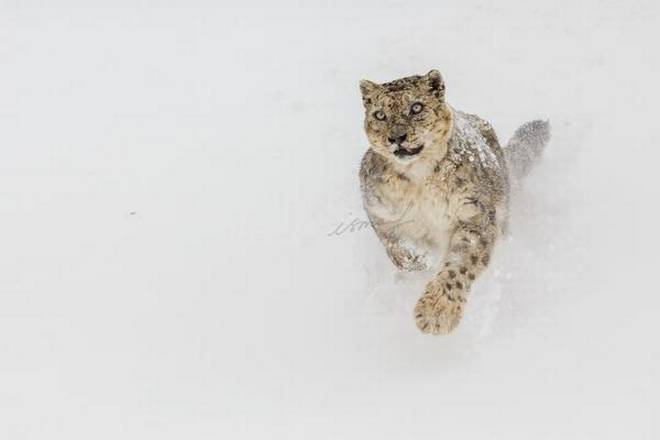Hyderabad, TELANGANA :

Hyderabad-based wildlife photographer Ismail Shariff on how the lens-totting tribe can exercise restraint in wilderness
The photograph of a snow leopard occupies a pride of place in Ismail Shariff’s edgily-designed studio. The Hyderabad-based wildlife photographer says he was blessed, not plain lucky, to have been able to capture the leopard from barely 15 feet distance in Spiti, Himachal Pradesh, this year.
Shariff has been a part of three snow leopard expeditions. Earlier, he had to be content with images where the leopard was a speck in the frame. “Animals in regions like Spiti or Leh are shy. They sense human presence a mile away,” he says.
A cartload of patience helps photographers get the right shot. They wait for minutes or hours, anticipating the animal’s next move. Shariff’s experience was no different, “From where we were staying, we could spot the leopard sleeping and ran out with our cameras. The villagers were also keen to have a glimpse. We felt that when the leopard wakes up, it will walk away from the noise and make its way to a clearing. We positioned ourselves such that we can get images but not be in its line of sight.”
He’s elated to have captured these images, but he mulls over and says, “If the snow leopards could come this close to humans, either they were short of food or they’ve gotten used to human presence.”
Shariff has been an avid wildlife photographer since 2008 and has observed the rise in numbers in his tribe. “There were fewer people exploring wildlife photography back then since not everyone could afford the flamboyant lenses,” he says.
In July, Shariff plans to visit Ladakh to photograph the Pallas’ cat (named after German naturalist Pyotr Simon Pallas). Besides these niche expeditions, he’s also frequented Tadoba National Park (92 times), Kabini and Jim Corbett National Park that are popular among tourists.
The observations while on these trips make him wonder if aspiring photographers compromise on the ethics of wildlife photography for instant gratification on social media.
It isn’t a case of sour grapes or a cry for exclusivity, Shariff clarifies, “There isn’t much money to be made out of photography in India. A few established photographers work with forest departments and voluntary organisations. Their work helps in documentation and conservation activities. For most others, it’s a hobby. There’s nothing wrong with more people exploring this line. The trouble begins when ego kicks in and you want to bend rules.”
There have been instances of photographers getting too close for the comfort of animals and birds — from attempting to veer off course during safaris to getting closer to bird nests. This isn’t limited to India, says Shariff, sharing instances where he spotted photographers getting off a safari vehicle in Yellowstone National Park in the US or crowding to take shots of a Broadbill’s nest in Malaysia.
Dos and don’ts
* The enthusiasm for a great shot needs to be tempered with restraint and respect for wildlife habitats. While on safaris in places like Tadoba, Kabini or Corbett, drive slowly, don’t talk loudly and never get off the vehicle. By irritating or threatening the animal, you also put yourself at danger. “I’ve seen people trying to bribe guides and drivers to take a different route or allow them to get off the vehicle, setting a wrong precedence to others,” Shariff points out.
* Don’t underestimate nature. Respect weather conditions. Shariff recalls being blown five feet high when a gust of wind changed director in Chopta, Uttarakhand.
* Steer clear of mothers with cubs. “Mothers, be it a tigress, lioness, deer, peafowl or a bear, will do anything to safeguard its offspring.”
* Don’t try to film animals in nocturnal situations unless permitted by forest department. Animal movement is pronounced and unpredictable at night. There have been cases of road-kills where vehicles have knocked down animals.
* If one is truly interested in turning their passion for wildlife photography into something meaningful, collaborate with forest departments or organisations that document wildlife and living conditions of people living close to these zones. A niche category that’s emerging, called conservation photography, helps initiate a dialogue.
Factoid: Collaborate for conservation
Dharmendra Khandal is a conservation biologist, researcher, botanist and photographer associated with Tiger Watch in Ranthambore. His efforts have led to capture of several poachers in Rajasthan. Khandal also helped identify several species of spiders.
source: http://www.thehindu.com / The Hindu / Home> LifeStyle> World Environment Day / by Sangeetha Devi Dundoo / June 03rd, 2017









